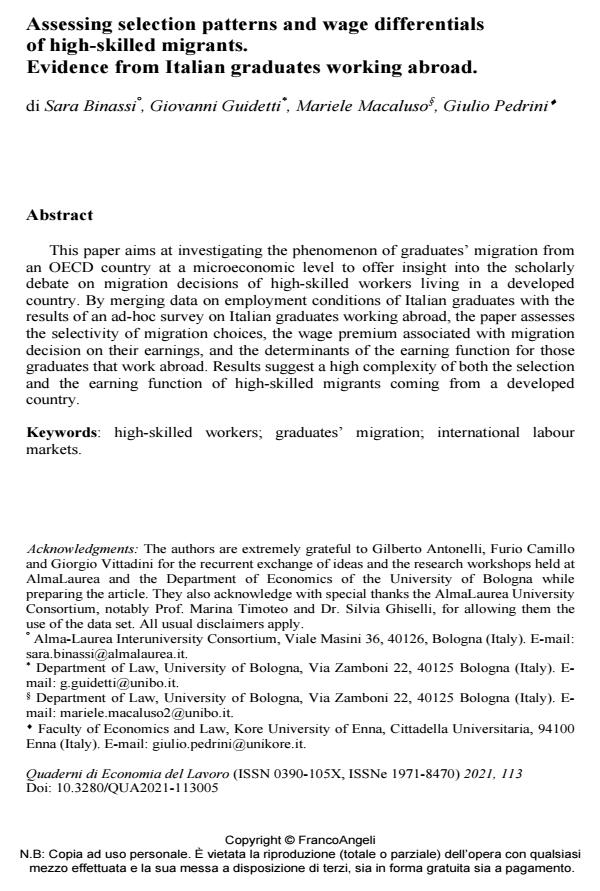Assessing selection patterns and wage differentials of high-skilled migrants. Evidence from Italian graduates working abroad.
Titolo Rivista QUADERNI DI ECONOMIA DEL LAVORO
Autori/Curatori Sara Binassi, Giovanni Guidetti, Mariele Macaluso, Giulio Pedrini
Anno di pubblicazione 2022 Fascicolo 2021/113
Lingua Inglese Numero pagine 33 P. 83-115 Dimensione file 425 KB
DOI 10.3280/QUA2021-113005
Il DOI è il codice a barre della proprietà intellettuale: per saperne di più
clicca qui
Qui sotto puoi vedere in anteprima la prima pagina di questo articolo.
Se questo articolo ti interessa, lo puoi acquistare (e scaricare in formato pdf) seguendo le facili indicazioni per acquistare il download credit. Acquista Download Credits per scaricare questo Articolo in formato PDF

FrancoAngeli è membro della Publishers International Linking Association, Inc (PILA)associazione indipendente e non profit per facilitare (attraverso i servizi tecnologici implementati da CrossRef.org) l’accesso degli studiosi ai contenuti digitali nelle pubblicazioni professionali e scientifiche
This paper aims at investigating the phenomenon of graduates’ migration from an OECD country at a microeconomic level to offer insight into the scholarly debate on migration decisions of high-skilled workers living in a developed country. By merging data on employment conditions of Italian graduates with the results of an ad-hoc survey on Italian graduates working abroad, the paper assesses the selectivity of migration choices, the wage premium associated with migration decision on their earnings, and the determinants of the earning function for those graduates that work abroad. Results suggest a high complexity of both the selection and the earning function of high-skilled migrants coming from a developed country.
Parole chiave:high-skilled workers; graduates’ migration; international labour markets.
Sara Binassi, Giovanni Guidetti, Mariele Macaluso, Giulio Pedrini, Assessing selection patterns and wage differentials of high-skilled migrants. Evidence from Italian graduates working abroad. in "QUADERNI DI ECONOMIA DEL LAVORO" 113/2021, pp 83-115, DOI: 10.3280/QUA2021-113005